“General Quarters. All hands, man your battle stations!” The cry came over the PA system, following the bugle call of Buglemaster Second Class Will Eddelman, the bugler aboard the battleship USS Texas (BB-35).
It was March 25, 1945, and the pre-invasion bombardment of Okinawa was about to begin. For the crew of the Texas, this was the last time they’d hear the call to General Quarters, almost a daily call in combat zones, for next seven weeks. The need to maintain constant vigilance to ward off attacks by Japanese kamikaze would push the crew of Texas to their limits.
Commissioned in 1914, the Texas was an “old lady” in the fleet, saved from obsolescence by the need for shore bombardment to cover amphibious landings. The crew was experienced. Operation ICEBERG, the invasion of Okinawa, was the fifth, and final, amphibious landing the ship was to cover. She had covered the landings in North Africa, Normandy, Southern France, and Iwo Jima. But Okinawa would prove to be an experience completely apart.
In January 1945, Texas, under the command of Captain Charles Baker, who had been the ship’s commanding officer since March 1944, left Pearl Harbor for the Pacific theater. The ship had undergone extensive work after battling German forces in Operation OVERLORD and DRAGOON. The crew was refreshed, and ready to return to action. First up was the invasion of Iwo Jima. Texas arrived on station off of Iwo Jima on February 16, 1945, and began pre-invasion bombardment. She stayed in the vicinity, providing fire on targets of opportunity until March 7, having expended 923 rounds of 14-inch projectiles, when she sailed for Ulithi Atoll for replenishment and minor repairs to damage done by the main batteries firing.
-

USS Texas underway of Iwo Jima, February 1945. Courtesy of Naval History and Heritage Command.
-

On February 17, 1945, Underwater Demolition Teams went in two days before the invasion of Iwo Jima to clear beach obstacles and ensure landings beaches were ready. The Texas and other ships provided covering fire. Courtesy of Naval History and Heritage Command.
After only 11 days in Ulithi, Texas was on the move again. Although the week and a half spent in Ulithi had been enough to resupply the ship, it was not nearly enough time to prepare the ship for another extended engagement. The invasion of Okinawa was scheduled to begin on April 1, but pre-invasion bombardment plans called for Texas to be on station on March 25. The ship had spent just 20 days off Iwo Jima, retiring in the evenings to deeper waters, before returning each morning to provide firing support as needed. Japanese aerial attacks on the US fleet had not been an issue at Iwo Jima, allowing the ship’s crew to maintain a normal routine of duty rotations.
Okinawa was expected to be a different story. The only other fighting the Japanese were engaged in was in the southern Philippines, which freed up a significant number of aviators. Okinawa was home to several airfields, and others were close. American planners estimated 2,000-3,000 Japanese aircraft would be available to carry out raids on the US fleet. In preparation for these potential attacks, a series of radar pickets were deployed to catch incoming aircraft at ranges up to 100 miles from the island. The destroyers and other small craft stationed at these pickets would ideally intercept enemy aircraft before they could move in closer to the capital ships. Despite all the precautions, every ship would have to be on high alert for Kamikaze attacks.
US Navy ships during World War II operated on a series of watches, manned by watch sections. A large ship, such as Texas, was divided into departments, such as navigation and gunnery. Those departments were further divided into divisions, and watch sections were pulled from those divisions. Each watch generally lasted four hours, beginning at midnight. This allowed crew time for other tasks, such as laundry, meals, and rest. Watches could also have a condition, of which there were three:
Condition 1 – Known as General Quarters, all men were to man their battle stations, as contact with enemy surface forces was actual or imminent. All tasks not necessary to shipboard defense were not to be carried out.
Condition 2 – Half of the ship’s gun batteries were manned, as well as damage control stations. Enemy surface force contact was probable.
Condition 3 – No main battery guns were manned; this condition was set for anticipated aerial attack and was the normal wartime cruising condition.
As the bugler’s call to General Quarters sounded, the crew of Texas rushed into action, closing watertight doors, grabbing helmets and lifejackets, and rushing to their battle stations. There they would remain for over 50 days.
The ship’s commanding officer, Captain Baker, made the difficult decision to keep his entire crew of nearly 2,000 sailors at their battle stations for the duration of the ship’s time off Okinawa.
Due to the credible threat of increased kamikaze attacks, Baker felt that his crew and his ship would be better protected if they could respond with antiaircraft fire in seconds, not minutes. The time it took for sleeping men to be roused from their bunks and make their way topside could mean the difference between life and death.
On April 6, Japanese forces launched the first of a series of kamikaze attacks as part of Operation Ten-Go, the last Japanese naval operation of the war. Between April 6 and June 22 ten attacks were launched, with a total of 1,465 kamikazes and over 1,300 other Japanese aircraft. The crew of Texas, always at the ready, fended off numerous attacks. On April 16, heavy aerial attacks began in the morning. It was the third Japanese attack, and this time Texas came under direct attack. With the crew at battle stations, Texas quickly responded, shooting a “Kate” bomber down only 1,800 yards from the ship. The attacks continued, and the crew stayed vigilant until retiring from the operational area on May 14.
-

The first of 10 attacks by Japanese kamikazes took place on April 6-7. Kamikazes often attacked at dusk and dawn to take advantage of the low light to avoid visual detection. Courtesy of Naval History and Heritage Command.
-

April 6, 1945. A Japanese Zeke attempting to attack USS Vincennes crashes into the water, missing the ship. Courtesy of Naval History and Heritage Command.
So what did it really mean for the crew of Texas to stay at General Quarters for over 50 days? Each crew member has a job on board the ship. Some are cooks, others work in the laundry, some work in the massive main gun turrets. During General Quarters, all non-essential work has to stop. Each crew member is also assigned a battle station. Those not needed to keep the ship operating report to an essential duty such as manning a gun, a battle dressing station, or a damage control party. A sailor reports to that position and stays there until ordered to stand down.
Under normal operating conditions, and outside of a combat zone, a day aboard ship began with reveille at 0530, and taps at 2105 (9:05 p.m.), signaling all crew, unless on watch, should be in bed. Three hot meals were served along with mid-meal snacks of coffee and baked goods fresh from the ship’s bakery. It was a busy life, but the sailors were well-fed and entertained, with shipboard bands playing concerts, films shown on the main deck, and books and music available from the ship’s library.
Life for the crew of Texas off Okinawa was vastly different. For over 50 days, the crew of Texas remained confined to their battle stations. Men three or four decks below in powder handling spaces and magazines had to remain there. Turret crews crammed into the small main gun turrets had to remain in place. Already confined to the ship, as is the reality for every sailor, they were further confined to gun tubs, ammo lockers, engine rooms, and plotting rooms.
Sailors confined to interior spaces recalled sending waste buckets topside to be emptied, and clean buckets being lowered with food. Not the food they were accustomed to, either. Off of Iwo Jima, the crew had been able to maintain a more regular schedule, with hot meals for breakfast and supper, and lunches of K Rations. In their time off Okinawa, all meals were K Rations or sandwiches, passed out and eaten in place. K Rations were meant initially as a short-term food option, but for the Texas crew, it was 50 plus days of crackers and canned “pork luncheon meat.” Every third day or so, men would be relieved long enough to shower, put on fresh clothes, and return to their battle station. Over these seven weeks the Texas expended a tremendous amount of ammunition, estimated to be four shiploads worth: 2,019 fourteen-inch shells, 2,643 5-inch shells, 490 3-inch shells, 3,100 rounds of 40 mm, and 2,205 rounds of 20 mm ammunition.

Turret crews aboard Texas had to remain at battle stations in cramped quarters. This is the port side (left) side gun of the No. 1 turret. Photo is author’s own.
It was a huge sacrifice. The men, in true military fashion, complained to one another. But they all stayed put. They all did their part to keep the ship and their shipmates safe. Over those seven weeks they mourned the death of President Roosevelt, learned of the end of the ar in Europe, and watched their shipmates suffer as kamikazes struck in a final desperate attempt to silence the US Navy. In the end, the sacrifice paid off. Texas left the combat zone unscathed, with all hands in good shape. No other ship is known to have kept its crew at General Quarters for so long a time.
Was it truly necessary to ask the crew to operate under such difficult conditions? Perhaps not, but that was a gamble that Captain Baker did not want to take. He truly believed the short-term sacrifice and difficulty would save lives, and it did.
By the time Texas left on May 14, 1945, 16 US ships had been sunk and 46 damaged severely by Ten-Go attacks.
On August 17, 1945, Captain Baker was relieved of command after 526 days. He was beloved by the crew and had commanded the ship through four major engagements, losing only one crew member. As he took his leave, he addressed the crew and reaffirmed the importance of their sacrifices:
“Well men this is it. This is what we have been working for since the attack on Pearl Harbor. I know how you men feel, and this is your night to howl.
I know at times I have given some of you men hell, and you know that, but every thing I have done to you, or for you, was for the good of the ship.
The Texas has been like a home to me, and I am truly proud of the men who made her that way. The people back home say the Navy is made of iron, but really and truly it is you men. The men of the Texas are made of iron. My heart has been with, and will remain with, the Texas and you men.
You know that the men of the fleet just marvel how we stayed at General Quarters for some 50 days. That is why I think we are here today. We were always ready for anything that should come up. Some ships got theirs while they were at chow, or at some other activity. We have heard other ships going into evening alert, but we were always there and ready.
I was kind of sorry to receive my orders this morning, and that I would have to leave you before the war was over, but now that this has happened I can always say that we saw it through together, and to the end! And we’ve been through a lot, and have seen some blood and thunder together.
I again say that the ship is yours tonight, and you can do all the yelling and howling you want to."
Kali Martin
Kali Martin is a former Research Historian of The National WWII Museum's Jenny Craig Institute for the Study of War and Democracy.
Cite this article:
MLA Citation:
APA Citation:
Chicago Style Citation:
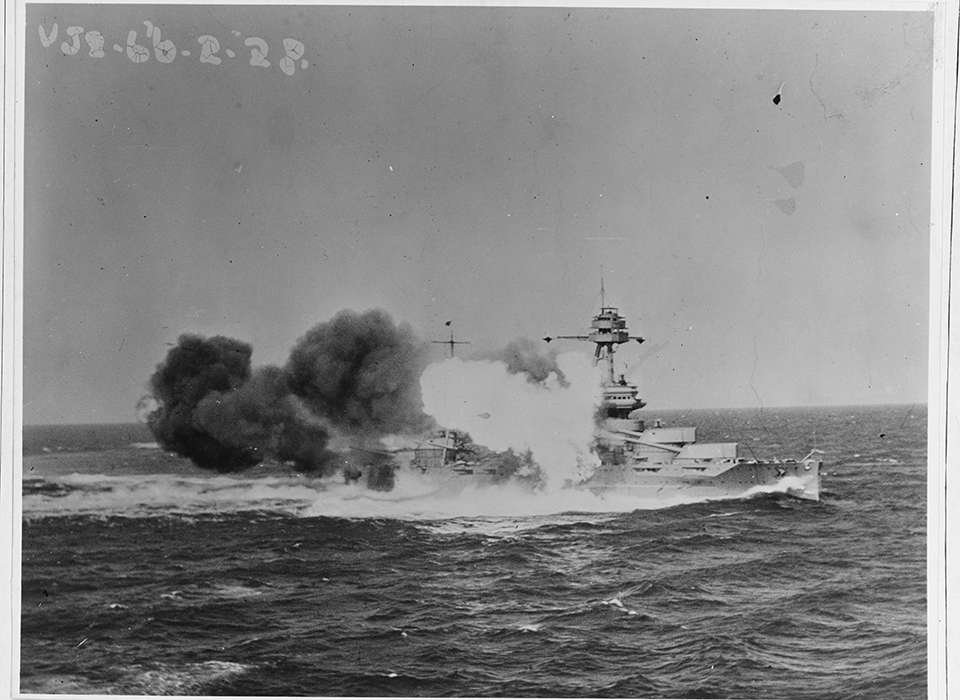

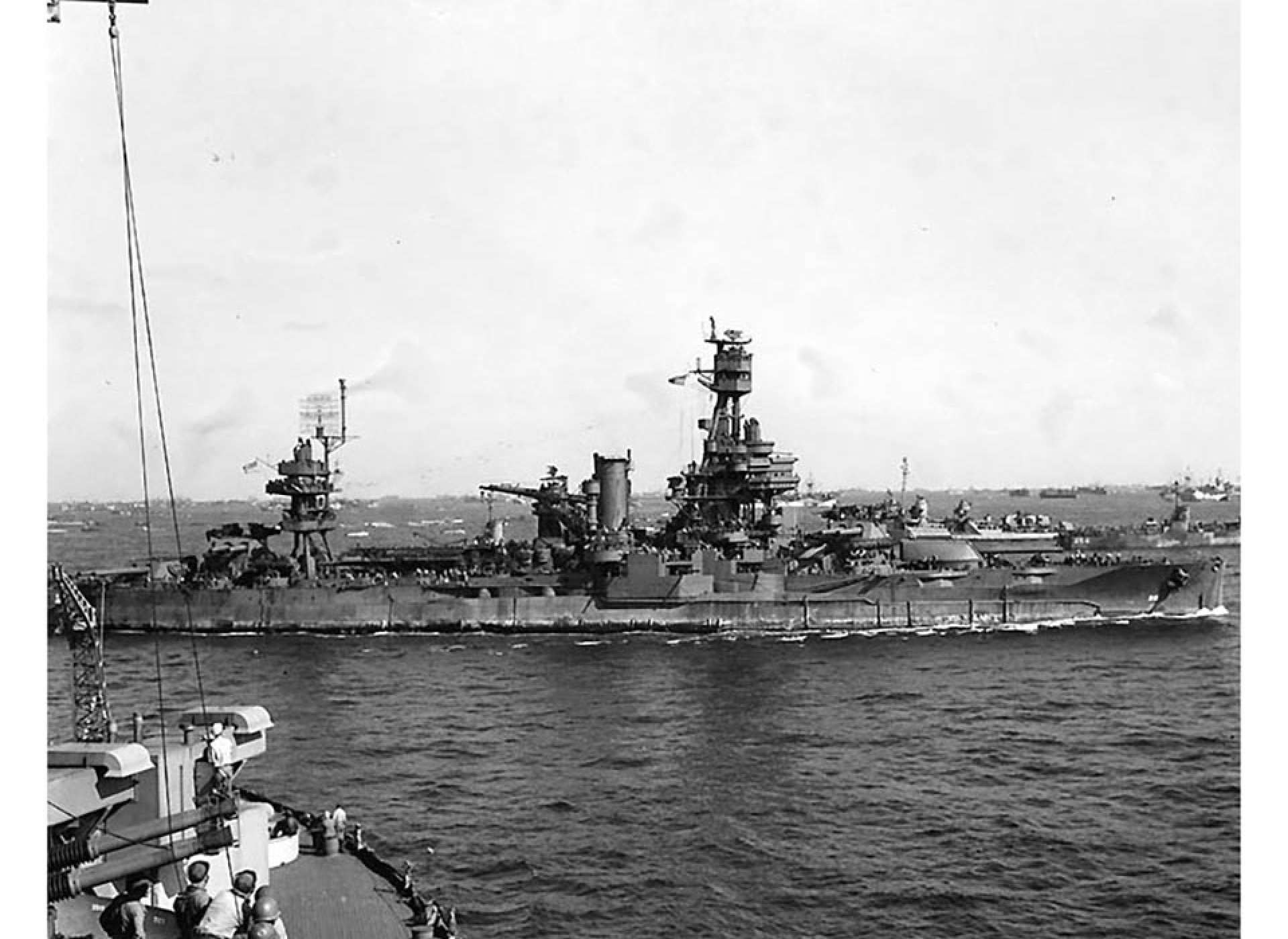
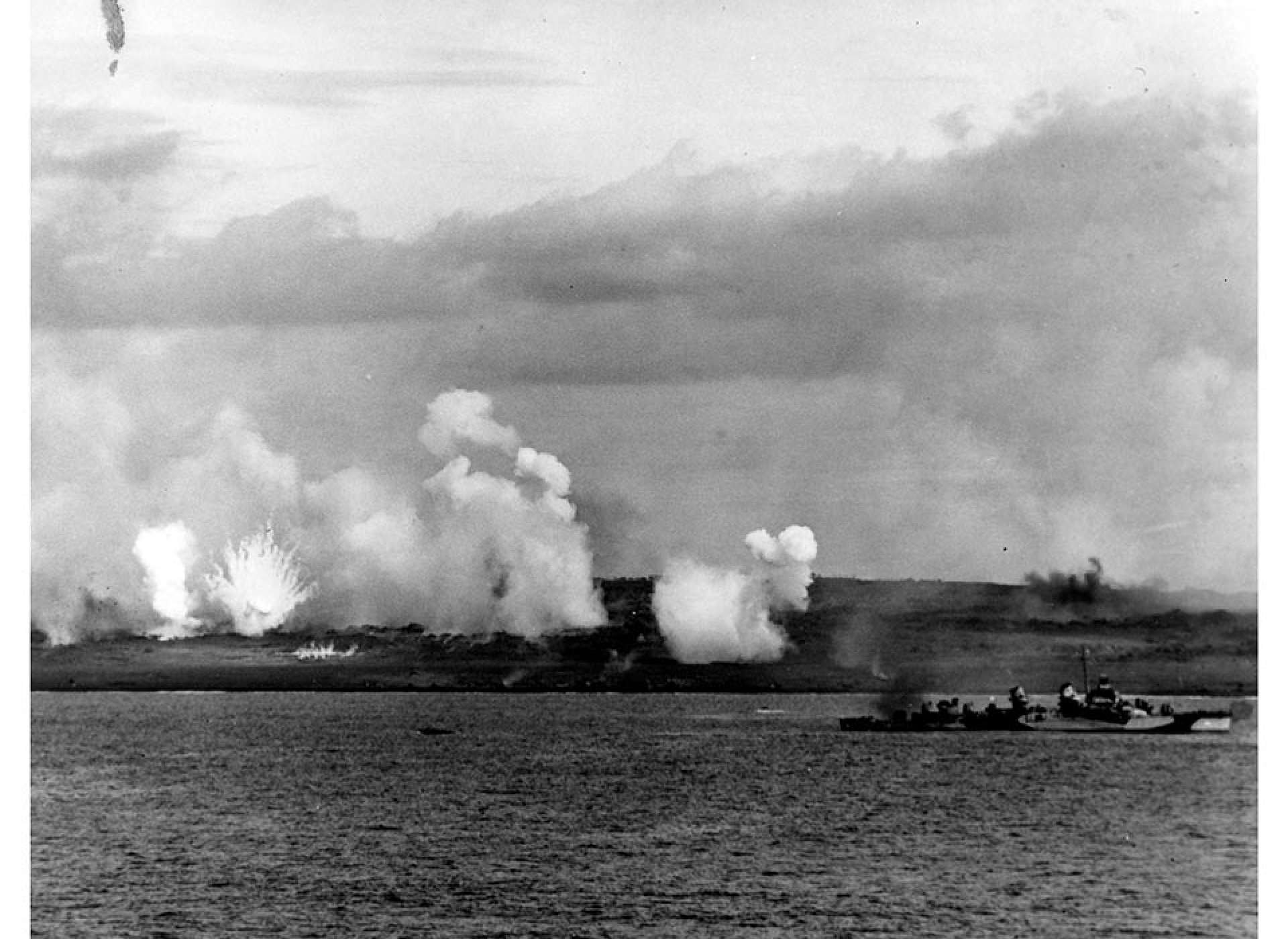
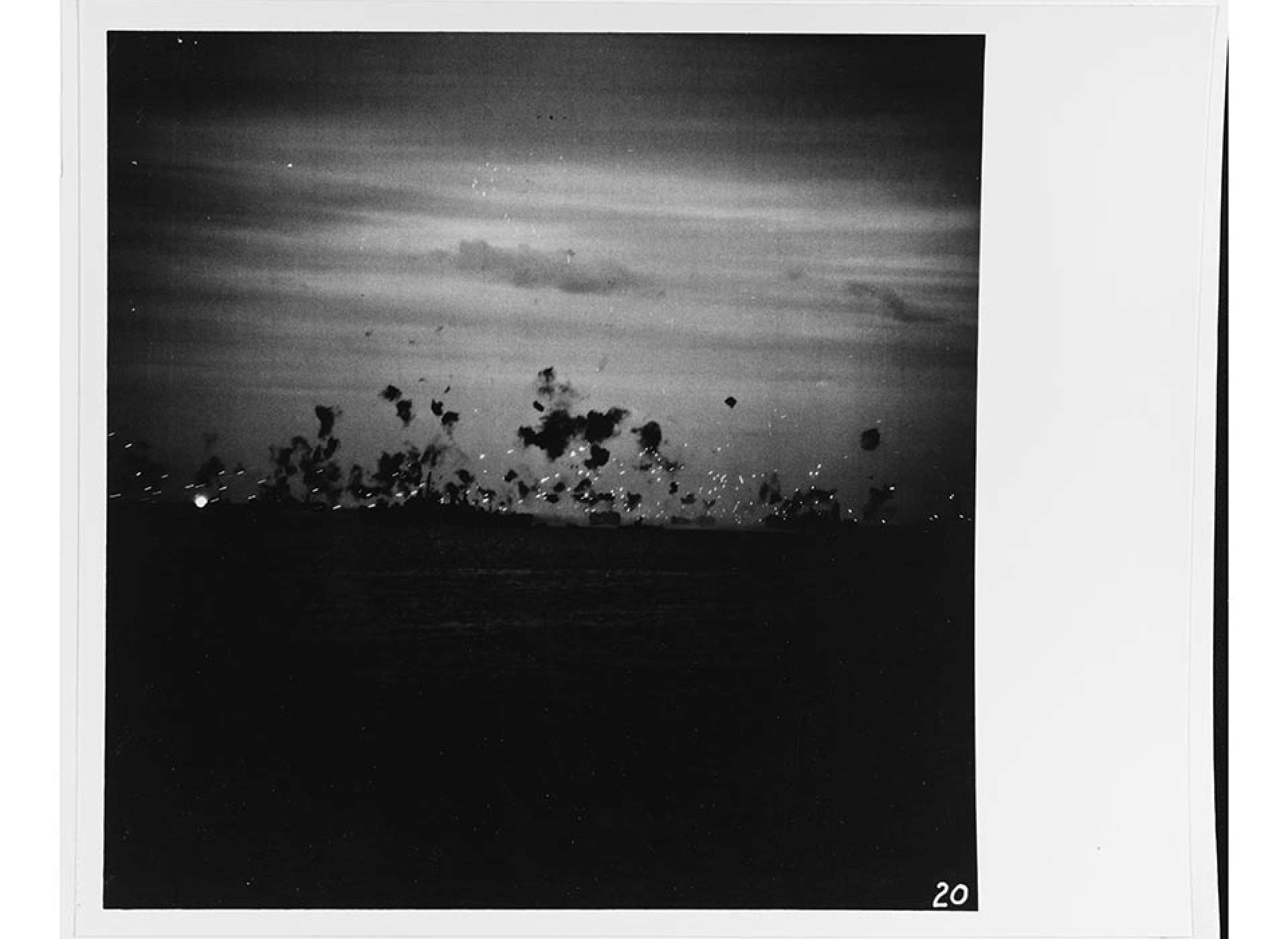
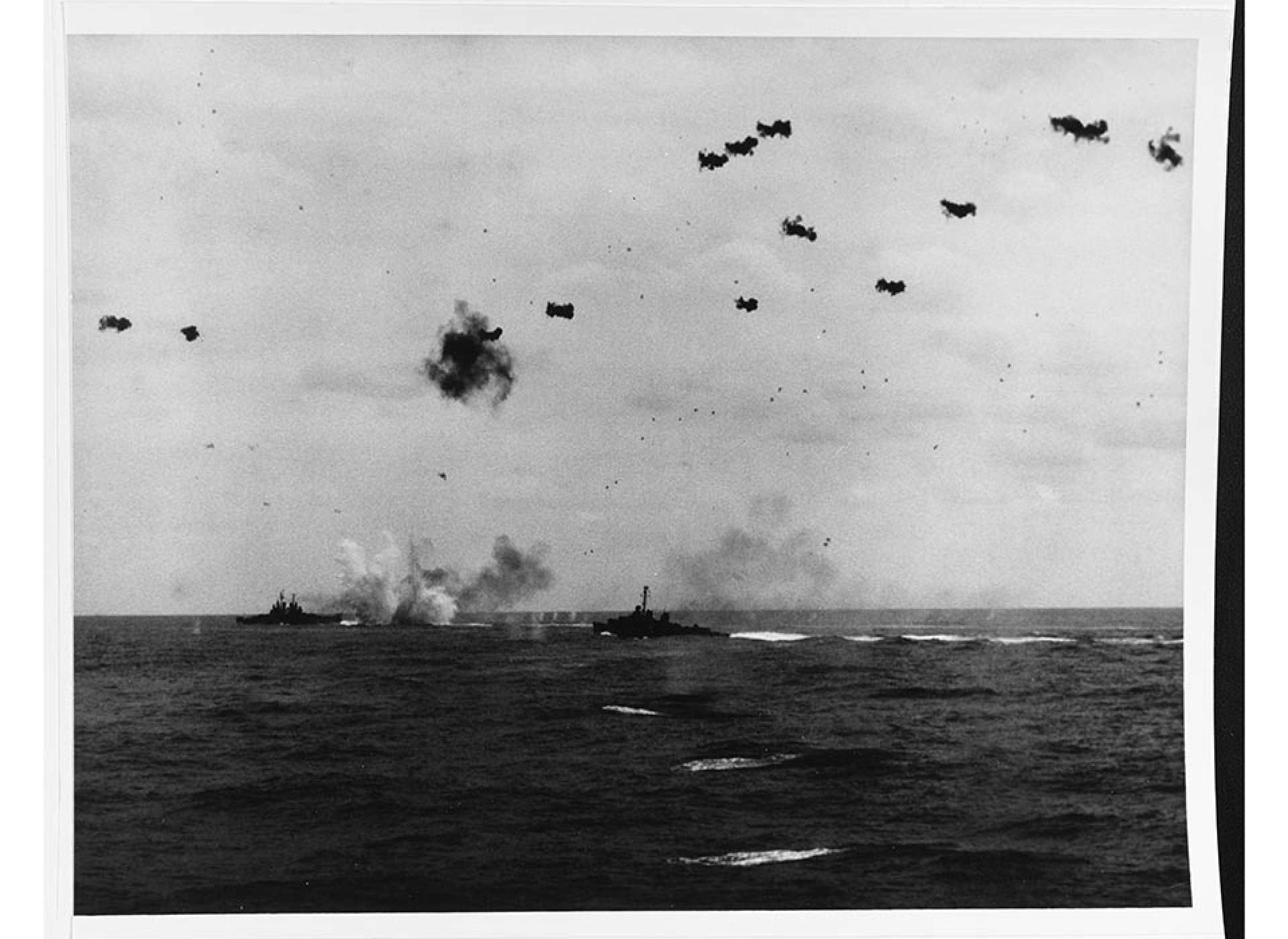






![Max Fuchs, New York City cantor, sings as Rabbi Sydney [sic] Lefkowitz, Richmond, VA, conducts the first Jewish services from Germany.](/sites/default/files/styles/max_650x650/public/2025-10/image1.jpg)

